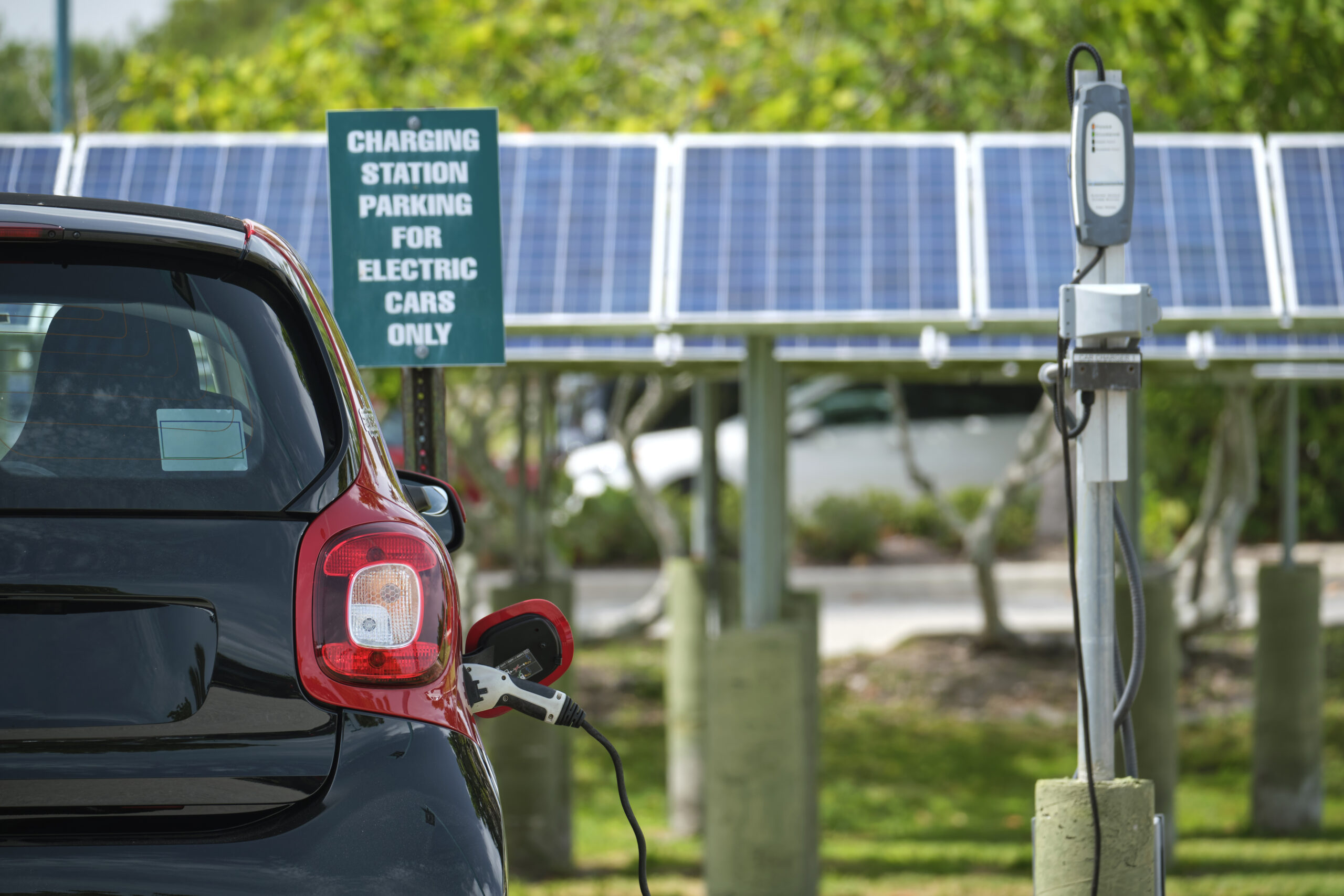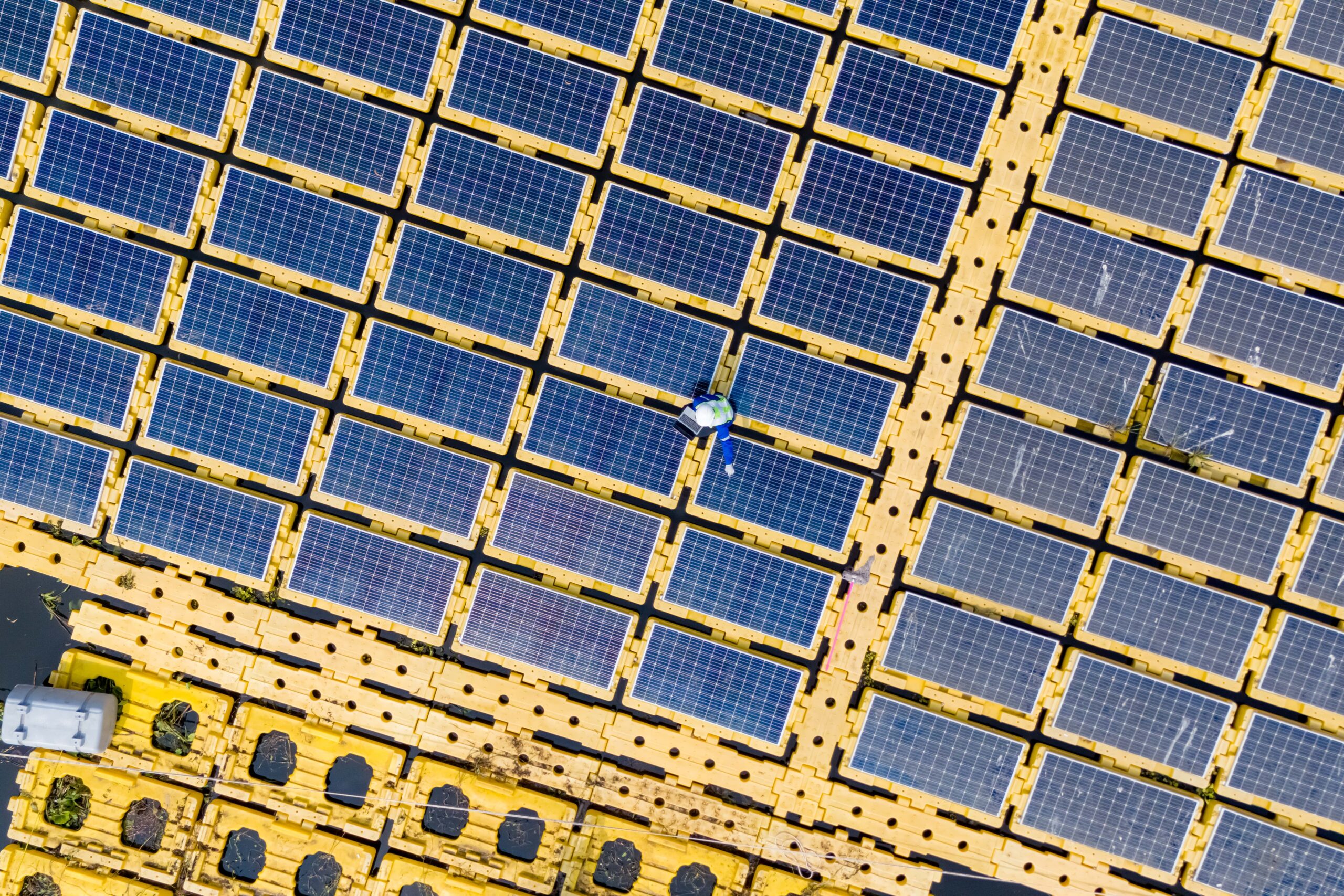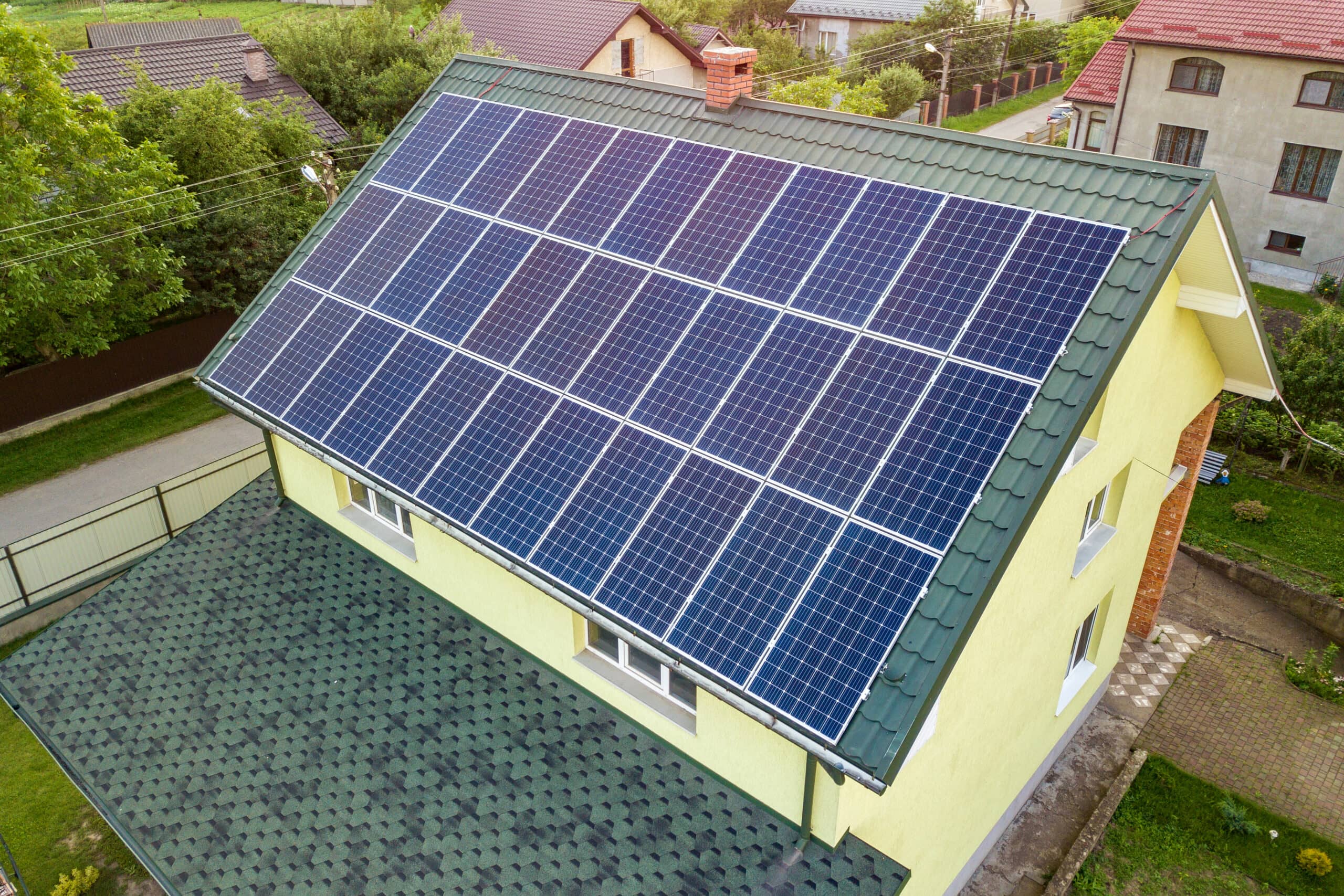Interest in electric vehicles (EVs) and renewable energy sources, such as solar power, has recently surged. With a growing awareness of the environmental impacts associated with conventional cars, more people are seeking sustainable alternatives.
This article explores a fascinating question: Can electric cars be effectively charged using solar panels? This topic highlights the advantages of clean energy and explores the practicality of integrating solar power into our transportation systems. Let’s journey to discover how solar energy can power our vehicles sustainably.
Leveraging Rooftop Solar for EV Charging
Utilizing rooftop solar for EV charging involves harnessing the power of solar panels, which convert sunlight into electricity. This clean and renewable energy source can directly power electric vehicles, offering a sustainable and cost-effective solution.
Not only does this reduce your carbon footprint, but it also provides a cost-effective solution for charging your electric car. Imagine the satisfaction of knowing that you’re not only driving on clean energy but also utilizing the sun’s power to do so!
If you’re considering this option, it’s essential to ensure that your solar panel system is appropriately sized to accommodate your household’s energy needs and your electric vehicle. This may require consulting with a professional to assess your energy usage and determine the ideal setup for your specific needs.
Overall, leveraging rooftop solar for EV charging is a win-win situation. It allows you to harness the sun’s power to fuel your electric vehicle and contribute to a greener future.
Types of Electric Vehicles
Electric vehicles, or EVs, run on electricity instead of traditional gasoline or diesel. They have an electric motor that powers the car, and a battery stores the electricity needed for driving.
There are three main types of electric vehicles: Hybrid Electric Vehicles (HEVs), Plug-in Hybrid Electric Vehicles (PHEVs), and Battery Electric Vehicles (BEVs).
1. Hybrid Electric Vehicles (HEVs): HEVs combine an internal combustion engine with an electric motor. They use regenerative braking to recharge the battery and are not plugged in for charging. Since HEVs don’t rely solely on electricity, they have minimal charging requirements and aren’t directly compatible with solar energy.
2. Plug-in Hybrid Electric Vehicles (PHEVs): PHEVs have an internal combustion engine and a larger battery that can be charged by plugging into an external power source. PHEVs can be charged using a regular or dedicated power outlet. They have moderate charging requirements and can benefit from solar energy if the charging is done during daylight hours when the solar panels generate electricity.
3. Battery Electric Vehicles (BEVs): BEVs are fully electric vehicles that run solely on electricity. They have larger batteries and require charging from an external power source. BEVs can be charged using a regular power outlet, a dedicated charging station, or fast-charging stations. They have higher charging requirements and can significantly benefit from solar energy if the charging uses solar panels during the day.
While all types of EVs can benefit from solar energy, the degree of compatibility depends on the charging requirements. HEVs have minimal charging requirements and aren’t directly compatible with solar energy. PHEVs and BEVs can benefit from solar power, with BEVs having higher charging requirements and potentially benefiting more from solar charging.
Electric Vehicle Charging Stations and Methods
Let’s dive into electric vehicle charging stations and the different levels of EV charging. It’s fascinating how technology has evolved to provide various charging methods for electric vehicles. We’ll explore Level 1, Level 2, and Level 3 charging and the role of public charging stations in the EV ecosystem.
1. Level 1 Charging: This is the simplest and slowest electric vehicle charging method. It involves plugging your EV into a standard AC electrical socket in homes or parking garages. Level 1 charging provides a charging rate of around 3-5 miles of range per hour, so it’s best suited for overnight charging or when you have plenty of time.
2. Level 2 Charging: This is a faster method of charging that requires a dedicated charging station, also known as a wall charger. Level 2 chargers use a higher voltage and amperage than Level 1, resulting in a faster charging rate. Depending on the specific charger and the vehicle’s capabilities, they can provide around 10-30 miles of range per hour. Level 2 chargers are standard in public parking areas, workplaces, and residential settings.
3. Level 3 Charging: Also known as DC Fast Charging or Supercharging, Level 3 Charging is the fastest charging method available for electric vehicles. These charging stations use direct current (DC) to charge the vehicle’s battery rapidly. Level 3 chargers can provide up to 80% charge in as little as 30 minutes, making them ideal for long-distance travel or when you need a quick top-up. However, it’s important to note that not all electric vehicles are compatible with Level 3 charging, so checking your vehicle’s specifications is essential.
Public charging stations play a crucial role in the EV ecosystem by providing convenient and accessible charging options for EV owners who may not have access to private charging infrastructure. They are in public areas such as shopping centers, parking lots, and major travel routes. Public charging stations offer Level 2 and Level 3 charging, allowing EV owners to charge their vehicles while running errands or longer trips.
Public charging stations in various locations offer convenient and accessible charging options for EV owners, enhancing the overall EV ecosystem.
Charging Electric Cars at Home with Solar Panels
Setting up a home solar panel system for charging your electric car is a fantastic way to harness clean energy and save on charging costs. Here’s a detailed guide to help you get started:
1. Assess your energy needs: Determine the amount of electricity required to charge your electric car based on its battery capacity and charging frequency. This will help you determine the size of the solar panel system you’ll need.
2. Evaluate your roof’s suitability: Check if your roof receives adequate sunlight throughout the day and is structurally sound to support solar panels. Ideally, a roof with minimal shading maximizes solar energy generation.
3. Consult with solar installers: Contact reputable solar installation companies to get quotes and recommendations tailored to your specific needs. They will assess your energy requirements and roof suitability and provide guidance on system size, panel placement, and equipment selection.
4. Choose the right solar panel system: Opt for high-quality solar panels with good efficiency ratings. Consider factors like warranty, durability, and aesthetics when making your selection. Additionally, ensure the system is compatible with your electric car’s charging requirements.
5. Install an EV charging station: To optimize charging efficiency, consider installing a dedicated EV charging station compatible with your electric car. This will ensure faster and more reliable charging and provide additional safety features.
6. Monitor and optimize energy usage: Implement monitoring systems to track your solar panel system’s performance and EV charging habits. This data will help you identify opportunities to maximize efficiency and adjust your charging schedule accordingly.
7. Take advantage of incentives: Research local incentives, tax credits, and rebates that may be available for installing solar panels and EV charging infrastructure. These can offset the initial installation costs and enhance your cost savings.
Charging electric cars at home with solar panels reduces carbon emissions and offers significant cost savings over time. By harnessing solar energy, EV owners can enjoy clean and renewable charging options, contributing to a greener environment. Additionally, government incentives and rebates may be available to offset the installation costs of solar panels and EV charging infrastructure, making the transition to sustainable transportation more accessible.
The Future Potential: EVs as Stored Energy Solutions
The concept of using electric cars as storage units for excess solar energy is called vehicle-to-grid (V2G) technology. Here’s a glimpse into the benefits and challenges:
Benefits of V2G technology:
1. Energy grid stabilization: Electric cars can store excess solar energy during the day and feed it back into the grid during peak demand periods, helping to balance the load and reduce strain on the grid.
2. Renewable energy integration: V2G technology enables better integration of renewable energy sources by storing excess solar or wind energy and using it when needed, even when the sun isn’t shining or the wind isn’t blowing.
3. Cost savings: Electric vehicle owners can earn money by selling stored energy back to the grid during high demand, potentially offsetting their charging costs and generating additional income.
4. Grid resiliency: In the event of power outages or emergencies, electric vehicles with V2G capabilities can provide backup power to homes, businesses, or critical infrastructure.
Challenges of V2G technology:
1. Battery degradation: Frequent charging and discharging cycles can accelerate battery degradation in electric vehicles, reducing lifespan. Managing this degradation is a key challenge for implementing V2G technology.
2. Infrastructure requirements: Widespread adoption of V2G technology would require the development of robust charging infrastructure and innovative grid systems capable of handling bidirectional energy flow.
3. Grid compatibility: Adapting existing energy grids to accommodate V2G technology may require significant upgrades and investments to ensure compatibility and stability.
4. Regulatory and policy frameworks: Establishing supportive policies, regulations, and market structures is crucial to incentivize V2G implementation and facilitate fair compensation for vehicle owners.
While using electric vehicles (EVs) as stored energy solutions through vehicle-to-grid (V2G) technology is promising, several regulatory and policy challenges must be addressed. These challenges include managing battery degradation, developing robust charging infrastructure, ensuring grid compatibility, and establishing supportive policies and regulations. Overcoming these barriers will be crucial for realizing the full potential of EVs as stored energy solutions and integrating them seamlessly into the energy grid.
Driving Solar Power Further
We explored using electric cars as storage units for excess solar energy through vehicle-to-grid (V2G) technology. Here are the main takeaways:
1. V2G technology allows electric cars to store excess solar energy daily and feed it back into the grid during peak demand.
2. V2G technology’s benefits include energy grid stabilization, better integration of renewable energy sources, cost savings for electric vehicle owners, and grid resiliency during power outages.
3. However, there are challenges to overcome, such as battery degradation, infrastructure requirements, grid compatibility, and the need for supportive policies and regulations.
Consider the synergy between electric vehicles and solar energy for a sustainable future. By utilizing V2G technology, we can maximize the benefits of renewable energy, reduce strain on the grid, and contribute to a cleaner and more efficient energy ecosystem.
Integrating electric vehicles (EVs) and solar energy presents a promising avenue toward a sustainable future. Through vehicle-to-grid (V2G) technology, we’ve glimpsed the potential for EVs to consume clean energy and act as storage units, contributing surplus solar power back into the grid. While V2G offers numerous benefits, including grid stabilization, renewable energy integration, cost savings, and enhanced grid resiliency, it poses challenges such as battery degradation, infrastructure requirements, grid compatibility, and regulatory frameworks.
Overcoming these obstacles will be essential for unlocking the full potential of EVs as stored energy solutions and seamlessly integrating them into the energy grid. By embracing this synergy between electric vehicles and solar power, we can drive towards a more sustainable and efficient energy ecosystem, reducing carbon emissions and paving the way for a cleaner future.






